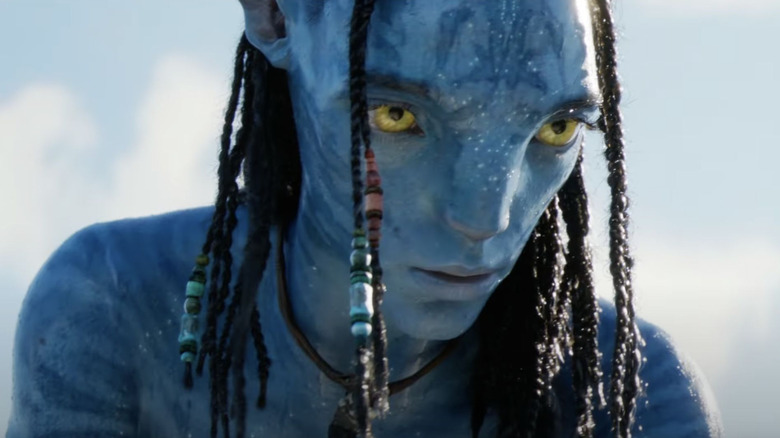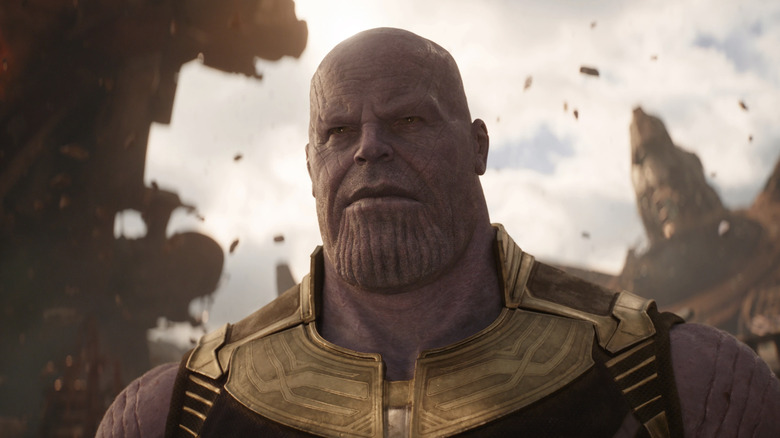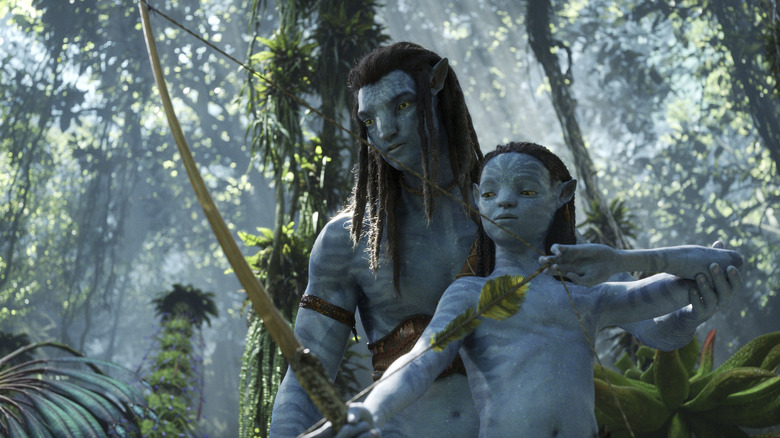James Cameron Explains How The MCU Made Avatar: The Way Of Water Look Better
The Marvel Cinematic Universe has been responsible for most of the big tentpole movies released throughout the year, starting with "Doctor Strange in the Multiverse of Madness" and most recently ending their slate of films for 2022 with "Black Panther: Wakanda Forever." With large outputs of films like this comes a large amount of VFX work. Recently, visual effects have been a large part of the conversation regarding Marvel Studios films, both regarding the quality of the effects and the questionable labor practices behind them. Now another filmmaker has entered the conversation.
With press tours featuring acclaimed filmmakers, the discussion of the MCU and comic book movies must also come. This time, it's James Cameron, who has already been very vocal about his relationship with studio executives, his upcoming "Avatar" films, and now, Marvel movies. Cameron has already stated that some comparisons between "Avatar" and the MCU are irrelevant, as his "Avatar" series of films are constructed and released differently than those of the MCU (imagine a 13-year wait between "Avengers" movies). However, one talking point Cameron found interesting was the advancement of visual effects, especially with the sheer amount of work being put out by studios. In fact, Cameron sees the work done in more recent Marvel Studios projects as stepping stones for what audiences will see in "Avatar: The Way of Water."
Necessity breeds innovation
In an interview with ComicBook.com, James Cameron was asked if the technology developed for movies like those from Marvel Studios had inspired the director and his production team to step their game up for "Avatar: The Way of Water." Necessity breeds innovation, and the director believes that's what has created opportunities for artists to hone their craft continually:
"Obviously, the big comic book films have been driving the sheer volume of the industry ... the rising tide of technique raises everybody together. It gives you higher quality artists, more tools and plug-ins, and code [to use]. You've got more talented people writing code out there."
Cameron was also quick to bring up Wētā FX (formerly known as Weta Digital), the VFX company behind "Avatar: The Way of Water," and how the team put together within that company is "coming out of that pool" of previously mentioned VFX artists. In Cameron's eyes, that team is the best of the best: "Wētā FX, as it's now known, is the best. ILM does great work, but when it comes to the kind of emotive and facial stuff that we're doing ... It's not even close."
Wētā had previously partnered with Digital Domain, a VFX company that James Cameron founded, to work on the CGI character Thanos in both "Avengers: Infinity War" and "Endgame." /Film dove deep into the behind-the-scenes process for bringing the character to life in 2018, and Thanos is widely considered to be not just one of the best CGI villains to date — he's also one of the best in the entire MCU.
The MCU as a stepping stone
It's been a few years since Wētā's work on Thanos in the "Avengers" movies, so it shouldn't be surprising that their work has only improved over time. The MCU and its large number of films released every year, along with the original series on Disney+, feel like stepping stones to work being done on "Avatar: The Way of Water." Cameron expressed his amazement with how far Wētā has come with their work in capturing the performances of actors, down to the feelings conveyed by minute expressions:
"I literally sometimes sit there in review sessions just going [making a shocked face] 'are you seeing what I'm seeing?' Sometimes you can understand the character's inner monologue with themselves and what they feel even before they say a word."
James Cameron has always strongly advocated for developing new film technology, creating new 3D camera rigs for 2009's "Avatar," and continuing that trend by innovating new ways to film motion capture performances underwater for the sequel. All this hard work seems to have paid off, with the first reactions to "The Way of Water" praising its visuals more than anything else. As Marvel Studios continues to develop new films for its upcoming phases in "the Multiverse Saga", and James Cameron continues work on the multiple sequels to "Avatar," it will be interesting to see how visual effects evolve.


